01.
Consortium and Affiliated Partners Identity
Consortium Identity
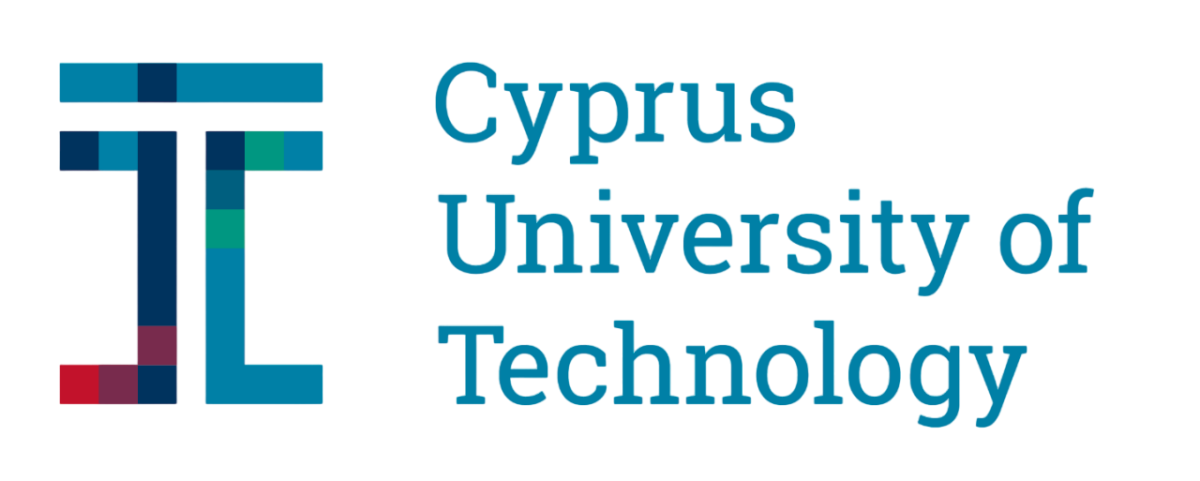
Cyprus University of Technology (CUT)
The Cyprus University of Technology (CUT), established by law in 2003, is one of three state universities in Cyprus. The University consists of six leading schools/faculties and 10 academic departments that offer high quality Undergraduate and Postgraduate education and research in science and applied technology. The CUT was ranked by Times Higher Education as one of the World’s best small Universities in 2017. The University has been also included among the world’s best 500 universities and among the 200 best Universities of Europe, as well as ranking first among the youngest Universities on a pan-European scale.
The ‘Remote Sensing and Geo-Environment Research Group’ (www.cyprusremotesensing.com) was established in 2007 within the Department of Civil Engineering and Geomatics of the School of the Engineering and Technology of the Cyprus University of Technology. The Group has secured funding from various European competitive calls from sources such as Horizon 2020, ESA, JPI, FP7, FP6, Interreg, MED, Life +, ECHO, Erasmus+, COST, etc. in addition to local funds from the Cyprus Research Promotion Foundation and Structural Funds. The Group has participated in over 60 research projects, over 25 industrial projects and has coordinated more than 20 research projects. Over the past 10 years, the Remote Sensing and Geo-Environment Research Group has been the most productive group within the University in securing funding and creating jobs. As well, it is the only research group in Cyprus focused on space-based and Earth observation, as is a member of several networks for Earth observation, including EARSEL, ACTRIS, AERONET and EARLINET.
Currently, the Remote Sensing and Geo-Environment Research Group participates as a partner in several projects, including the ‘SEO-DWARF’ HORIZON 2020 MSCA-RISE project, which uses satellite images from the Copernicus programs for marine applications, the ‘GEO-CRADLE’ HORIZON 2020 project that coordinates and integrating state-of-the-art Earth Observation activities in the regions of North Africa, Middle East, and Balkans and developing links with GEO related initiatives towards GEOSS and the ‘BACCHUS’ FP-7 project that aims to quantify the key processes and feedbacks controlling aerosol-cloud interaction (ACI), by combining advanced measurements of clouds and aerosol properties with state-of-the-art numerical modeling. In addition, the Group participates in two JPI projects focused on cultural heritage research using Earth Observation, which are the ‘CLIMA’ and ‘PROTHEGO’ as well as the ‘CASCADE’ FP7 project for investigating dryland ecosystems in southern Europe, so as to obtain a better understanding of sudden shifts in drylands that may lead to major losses in biodiversity and concomitant ecosystem services. Currently, the group participates in an Interreg bilateral cooperation program Greece – Cyprus which deals with the digital mapping and surveying of historical churches in Cyprus.
The Group coordinates the ‘ATHENA’ Twinning H2020 project that aims to establish a Centre of Excellence in the field of Remote Sensing for Cultural Heritage in the areas of Archaeology and Cultural Heritage through the development of an enhanced knowledge base and innovative methods. The Group also coordinates the ‘DECAT’ ECHO project that focuses on strengthening early warning systems in Europe using geospatial technologies for the better protection of citizens against disaster risks. Finally, the Group coordinates the ERASMUS+ project ‘INTRAPRISE‘ which aims to develop an intrapreneurial training program to assist managers and employees of the ICT sector to effectively adopt an intrapreneurial culture within the organisation of ICT companies.
The ‘Remote Sensing and Geo-Environment Research Group’ activities are under the umbrella of the ‘ERATOSTHENES’ Research Centre, one of the first established Centres within the Cyprus University of Technology. Recently, the ERATOTSHENES Centre has been accepted as a COPERNICUS Academy member. Professor Diofantos Hadjimitsis is the PI of CUT for the EXCELSIOR project.
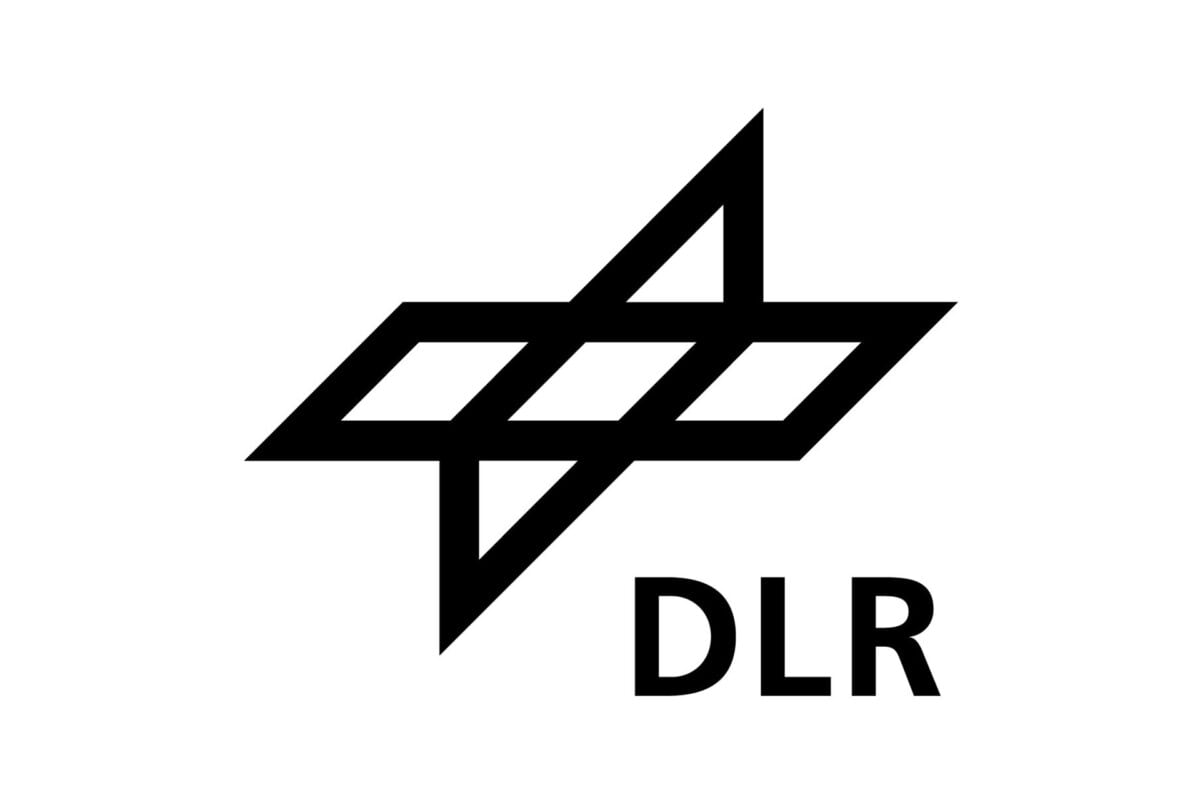
German Aerospace Centre (DLR)
The German Aerospace Centre (DLR) is Germany‘s national research centre for aeronautics, space, energy, transport, defence and security. The Earth Observation Centre (EOC) of DLR with the German Remote Sensing Data Centre (DFD) and the Remote Sensing Technology Institute (IMF) supports science and industry as well as the general public. With its national and international receiving stations, DFD offers direct access to data from national, European and international EO missions, derives information products from the raw data, disseminates these products to users, and safeguards all data in the National Remote Sensing Data Library for long term use. Its geoscience research related to the atmosphere, global change and civil security facilitates access to products and approaches based on remote sensing and consolidates their utilization in scientific and commercial domains. As one of the European Copernicus Processing and Archiving Centres (PACs) for the Sentinel-missions, involved in several Copernicus core services and being the key German institution to build and operate the Copernicus collaborative ground segment, the EOC has extensive knowledge and links to data, science and infrastructure in Copernicus. Mr. Gunter Schreier is the PI of DLR for the EXCELSIOR project.
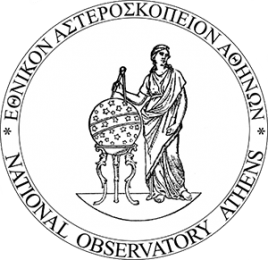
National Observatory of Athens (NOA)
The National Observatory of Athens (NOA) has been historically nominated by the Greek government as the sole institution in charge of natural disasters monitoring, with a clear mandate to conduct innovative research for the benefit of the Greek citizens. At global level it hosts, a) the UNESCO Chair for Natural Disasters, established within the framework of UNESCO-BRESCE, b) the Secretariat of the South Eastern European (SEE) Disasters Risk Assessment and Mitigation Network, and c) the Focal Point on the Global Earth Observing System of Systems (GEOSS), one of the four national GEO Offices in the World. NOA is also acting under a special agreement as Regional Support Office of UN-SPIDER. NOA is a regional EO hub for data, products and services in south-eastern Europe, Middle East and North Africa, through its BEYOND Center of Excellence for EO-based monitoring of natural disasters and the coordination of the H2020 project GEO-CRADLE for integrating EO-capacities and consolidating the needs for EO services in the region-of-interest.
At global level it hosts, a) the UNESCO Chair for Natural Disasters, established within the framework of UNESCO-BRESCE, b) the Secretariat of the South Eastern European (SEE) Disasters Risk Assessment and Mitigation Network, and c) the Focal Point on the Global Earth Observing System of Systems (GEOSS), one of the four national GEO Offices in the World.
NOA is a key Copernicus player providing ICT and infrastructures for storing, managing and disseminating big data from the Sentinel family of satellites that are maintained by Copernicus, towards establishing NOA as a central node in the European federated Copernicus Sentinel Ground Segment. In addition, NOA brings in unique expertise in space data retrievals and state-of-the-art applications development of innovative tools and algorithms for satellite data processing from advanced Space sensors, aiming to monitor physical parameters critical to Earth Finally, it contributes with significant links with GEOSS and other regional initiatives (e.g., BEYOND, PANACEA), while at the same time it has long tradition in organization of summer schools and regional workshops. Dr. Haris Kontoes is the PI of NOA in the EXCELSIOR project.
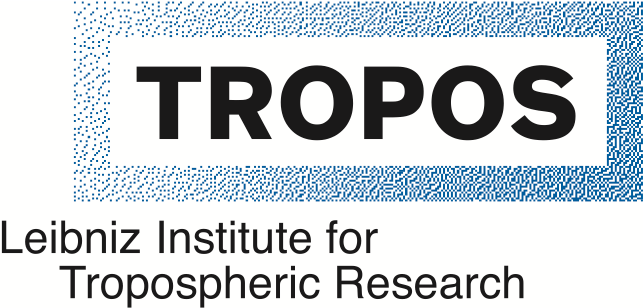
Leibniz Institute for Tropospheric Research (TROPOS)
The Cyprus University of Technology (CUT), established by law in 2003, is one of three state universities in Cyprus. The University consists of six leading schools/faculties and 10 academic departments that offer high quality Undergraduate and Postgraduate education and research in science and applied technology. The CUT was ranked by Times Higher Education as one of the World’s best small Universities in 2017. The University has been also included among the world’s best 500 universities and among the 200 best Universities of Europe, as well as ranking first among the youngest Universities on a pan-European scale.
The ‘Remote Sensing and Geo-Environment Research Group’ (www.cyprusremotesensing.com) was established in 2007 within the Department of Civil Engineering and Geomatics of the School of the Engineering and Technology of the Cyprus University of Technology. The Group has secured funding from various European competitive calls from sources such as Horizon 2020, ESA, JPI, FP7, FP6, Interreg, MED, Life +, ECHO, Erasmus+, COST, etc. in addition to local funds from the Cyprus Research Promotion Foundation and Structural Funds. The Group has participated in over 60 research projects, over 25 industrial projects and has coordinated more than 20 research projects. Over the past 10 years, the Remote Sensing and Geo-Environment Research Group has been the most productive group within the University in securing funding and creating jobs. As well, it is the only research group in Cyprus focused on space-based and Earth observation, as is a member of several networks for Earth observation, including EARSEL, ACTRIS, AERONET and EARLINET.
Currently, the Remote Sensing and Geo-Environment Research Group participates as a partner in several projects, including the ‘SEO-DWARF’ HORIZON 2020 MSCA-RISE project, which uses satellite images from the Copernicus programs for marine applications, the ‘GEO-CRADLE’ HORIZON 2020 project that coordinates and integrating state-of-the-art Earth Observation activities in the regions of North Africa, Middle East, and Balkans and developing links with GEO related initiatives towards GEOSS and the ‘BACCHUS’ FP-7 project that aims to quantify the key processes and feedbacks controlling aerosol-cloud interaction (ACI), by combining advanced measurements of clouds and aerosol properties with state-of-the-art numerical modeling. In addition, the Group participates in two JPI projects focused on cultural heritage research using Earth Observation, which are the ‘CLIMA’ and ‘PROTHEGO’ as well as the ‘CASCADE’ FP7 project for investigating dryland ecosystems in southern Europe, so as to obtain a better understanding of sudden shifts in drylands that may lead to major losses in biodiversity and concomitant ecosystem services. Currently, the group participates in an Interreg bilateral cooperation program Greece – Cyprus which deals with the digital mapping and surveying of historical churches in Cyprus.
The Group coordinates the ‘ATHENA’ Twinning H2020 project that aims to establish a Centre of Excellence in the field of Remote Sensing for Cultural Heritage in the areas of Archaeology and Cultural Heritage through the development of an enhanced knowledge base and innovative methods. The Group also coordinates the ‘DECAT’ ECHO project that focuses on strengthening early warning systems in Europe using geospatial technologies for the better protection of citizens against disaster risks. Finally, the Group coordinates the ERASMUS+ project ‘INTRAPRISE‘ which aims to develop an intrapreneurial training program to assist managers and employees of the ICT sector to effectively adopt an intrapreneurial culture within the organisation of ICT companies.
The ‘Remote Sensing and Geo-Environment Research Group’ activities are under the umbrella of the ‘ERATOSTHENES’ Research Centre, one of the first established Centres within the Cyprus University of Technology. Recently, the ERATOTSHENES Centre has been accepted as a COPERNICUS Academy member. Professor Diofantos Hadjimitsis is the PI of CUT for the EXCELSIOR project.

Department of Electronic Communications of the Ministry of Transport, Communications and Works (MTCW-DEC)
The Department of Electronic Communications of the Ministry of Transport, Communications and Works (MTCW-DEC) supports and promotes the ICT (Information and Communications Technologies) and the digital innovation for the provision of high quality and secure electronic communications services, within affordable prices, resulting in the increase of social and economic welfare and in general the exploitation of the benefits of the new digital age. MTCW-DEC has responsibilities in Radio-communications, Electronic Signatures, Information Society and Space issues. MTCW-DEC has been vested by law with the executive powers and responsibilities relating to frequency management and general regulation of radio, including satellite communications, as well as market surveillance of radio equipment. Also, MTCW-DEC is responsible for drawing up plans for radio and television coverage. Additionally, the MTCW-DEC advises the Minister of Transport, Communications and Works in all matters relating to electronic communications and represent Cyprus in international organizations and committees of the European Union. MTCW-DEC has been appointed as the competent authority for the promotion and implementation of the legislative framework for electronic signatures in Cyprus. Also, MTCW-DEC has been designated as the executive department to formulate and implement a comprehensive national strategy on Information Society. Moreover, MTCW-DEC has the responsibility for the European Space Policy, including the program Galileo/EGNOS and the program GMES/Copernicus, and the relations of the Republic of Cyprus with the European Space Agency (ESA). The director of the Electronic Communications Department Mr. George Komodromos is the PI of the MTCW-DEC for the EXCELSIOR project.
Affiliated Partners Identity
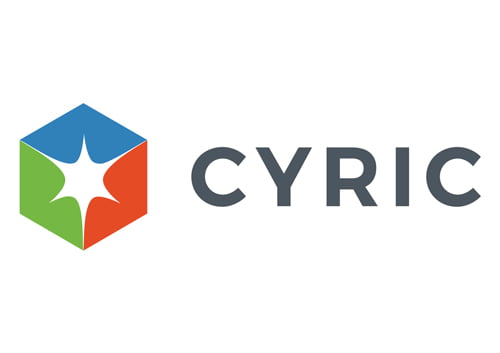
CyRIC
CyRIC is a fast growing company with a strategic aim to become an important regional Center developing disruptive products for the world markets and providing unique, high quality services to the industry.
CYRIC offers Research and Innovation Services for its customers in the fields of engineering design and prototyping, electronics and communications and software solutions. In addition a number of specialised consultancy and entrepreneurship services are offered to startups and SMEs.
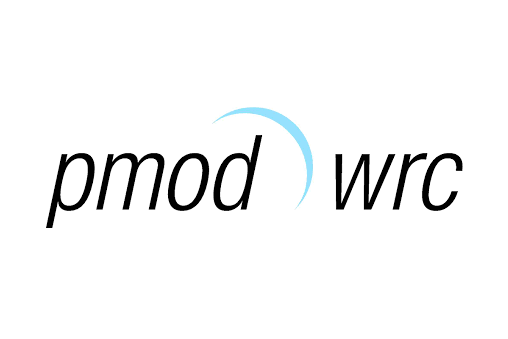
PMOD/WRC
The Physikalisch-Meteorologisches Observatorium Davos/World Radiation Center (PMOD/WRC):
- Serves as an international calibration center for meteorological radiation instruments.
- Develops radiation instruments for use on the ground and in space.
- Researches the influence of solar radiation on Earth’s climate.
Mission Assignment
Since its establishment in 1907, the Physikalisch-Meteorologisches Observatorium Davos (PMOD) has been studying the influence of solar radiation on the Earth’s climate. In 1926, the Observatory joined the Swiss Research Institute for High Altitude Climate and Medicine Davos and has since become part of this foundation. At the request of the World Meteorological Organization (WMO), the Federal Council decided in 1970 to finance a calibration center for radiation measurement as Switzerland’s contribution to the World Weather Monitoring Program of the WMO. Following this decision, the PMOD was commissioned to establish and operate the World Radiation Center (WRC).
Core Activities
The World Radiation Center maintains the primary standard for solar irradiance consisting of a group of high-precision absolute radiometers. In response to further inquiries from the WMO, a calibration center for atmospheric longwave radiation measuring instruments was established in 2004, and in 2008 the calibration center for spectral radiance measurements to determine atmospheric turbidity. Since 2013, the European UV calibration center has also been operated by the World Radiation Center. The World Radiation Center today consists of four sections:
- Solar Radiometry (WRC-SRS)
- Infrared Radiometry (WRC-IRS)
- Atmospheric Turbidity (WRC-WORCC)
- UV Radiometry (WRC-WCC-UV)
The calibration activity is embedded in an internationally recognised quality system (ISO 17025) to ensure reliable and traceable compliance with the quality standard.
